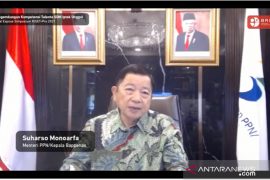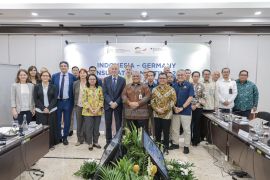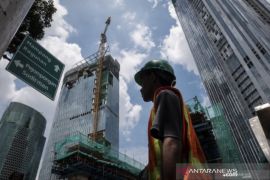... the government has designed its efforts as reflected in its capital incentives for the poor people ..."Jakarta (ANTARA News) - Indonesias income gap ratio, or the Gini ratio, has fallen from 0.413 in 2014 to 0.408 this year, according to an official of the National Development Planning Board (Bappenas).
Deputy for Population and Manpower of the Ministry of National Development Planning (PPN)/Bappenas Rahma Iriyanto stated at a seminar here on Tuesday that Indonesias Gini ratio had improved mainly due to a decline in the income of the middle and upper class of the population.
The decline in the income level of the middle and upper class has reduced the Gini ratio in 2015, she explained.
Therefore, Rahma acknowledged that the government still had to take significant efforts to improve the welfare of the people who still fall under the middle and lower income bracket. After all, the number of poor people in the fourth quarter of this year increased, regardless of the fact that the social gap was narrowing.
Based on the latest data of the Central Bureau of Statistics (BPS), the number of people living below the poverty line in the country was recorded at 28 million, or about 11.2 percent of the population.
"We see that the decline in the countrys Gini ratio is caused by the fact that the income of the upper class people dropped by 20 percent," she noted at a seminar organized by the World Bank to discuss the efforts to end the social gap in the society.
Rahma explained that the decline in the income of the people belonging to the middle and upper class was caused by the end of a positive era for high commodity prices.
The weakening prices of commodities, which have until now remained Indonesias mainstay exports, have affected the income of the middle and upper class people in several mineral-rich regions.
Although the Gini ratio has gone down, the efforts to bring about improvements will remain a difficult challenge. In 2016, the government is planning to further reduce the gini ratio to 0.39 as stated in the law on State Budget 2016.
Rahma believes that the important task to be undertaken is to ensure the realization of the fiscal policy 2016. She said the 2016 fiscal year policy has been designed with the objective of yielding equitable development results. As an example, she noted that the strengthening of the fiscal decentralization is expected to reinforce regional expenditure.
"To this end, the government has designed its efforts as reflected in its capital incentives for the poor people and in several social-oriented programs, such as smallholders credit (KUR) scheme and other social programs," she revealed.
In the meantime, the World Bank in its studies has recommended that the Indonesian government should improve public services in the regions, so that the people would enjoy better infrastructure and public facilities.
The government also needs to enhance employment opportunities and increase work productivity. The World Bank has also recommended that Indonesia should provide protection to the poor reeling under the impact of various economic and social pressures by, for example, offering social insurance to household families.
The government is also expected to adopt a fiscal policy, which will give priority to infrastructure expenditure, health, education, social assistance, and social insurance.
(Uu.A014/INE/KR-BSR/H-YH)
Editor: Priyambodo RH
Copyright © ANTARA 2015











